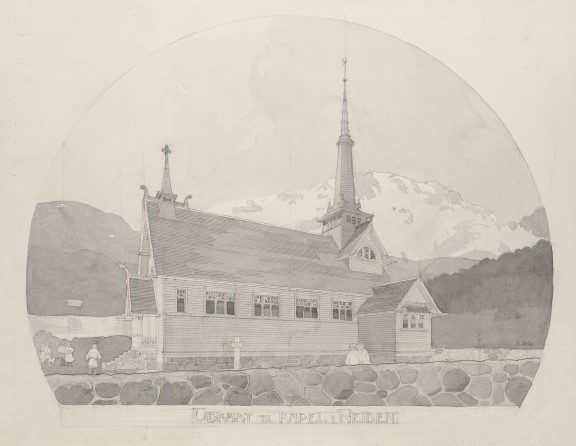

Architecture was one of several important aspects of cultural and political nation-building efforts in the young state of Norway. The stabbur (a traditional farm storehouse on pillars) was adopted as an archetypal Norwegian building, and buildings that included animal ornaments, decorative roof ridges and stabbur-like designs were declared to be in the ‘old Norwegian style’, today more often known as the ‘dragon style’.
Throughout Europe, folk cultures were widely believed to be the repositories of the ‘authentically’ national. Peasants were seen as guardians of the essential qualities of different national identities and in Norway, the archaic building types found in rural areas were seen as directly linked to the age of the Viking sagas. On field trips to farmsteads in eastern Norway, the architect Hermann Schirmer instructed his students in how to study old building customs and how to use these traditions in their own work.
